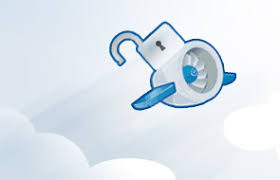 Google added support for Java in its free AppEngine hosting platform. Among additional services provided is BigTable database, that is optimized for scalability. Use of the datastore (BigTable is accessed through the DataNucleus Access Platform open source framework), is really easy (complies with JDO spec – also supports JPA).
Google added support for Java in its free AppEngine hosting platform. Among additional services provided is BigTable database, that is optimized for scalability. Use of the datastore (BigTable is accessed through the DataNucleus Access Platform open source framework), is really easy (complies with JDO spec – also supports JPA).
To deploy a war we have to add an appengine-web.xml file into the WEB-INF (that file contains the required application id, and some other optional parameters).
Google also provides an Eclipse SDK, that brings a GWT project wizard, and server test (simulates the AppEngine, including the services and the datastore) !
Details for uploading a war can be found here. Scalability features of the solution are great, for the database and static files.
See also : If you elect to use the free appspot.com domain name, the full URL for the application will be http://application-id.appspot.com/. You can also purchase a top-level domain name for your app, or use one that you have already registered.
There is no way to delete an application in App Engine. You can register up to 10 application IDs per Google account. If you do not want to use one of your allotted application IDs for the tutorial, you can just read this section, and refer to it later when you are ready to upload your first application.
It is stated that the offer is for now restricted to some users, however I did success registering my first application id using my Google account (a verification process of account through sms is required).
We can then now easily host a Cappuccino application : client part in the war’s web root (index.html entry point, Cappuccino application’s .js file that has been optimized through press tool, objective-j.js file), services code (Java classes), Spring jars and configuration, CP2JavaWS jars and configuration.
Download of application’s js files can be optimized (can use separate servers, others than the main server that serves dynamic resources -servlets/jsp) if they are marked as static in the application configuration file (via exclude/include parameters). By default JSP files and resources residing in the WEB-INF folder are considered dynamic.
 Following
Following  Power Toppler is a clone of the famous Nebulus (Atari ST/Amiga) for iPhone. It offers 16 levels (8 in the original game) and the character is a robot (was a frog). Graphics are presented as enhanced, however from provided
Power Toppler is a clone of the famous Nebulus (Atari ST/Amiga) for iPhone. It offers 16 levels (8 in the original game) and the character is a robot (was a frog). Graphics are presented as enhanced, however from provided  Google presents
Google presents  Google added support for Java in its free
Google added support for Java in its free